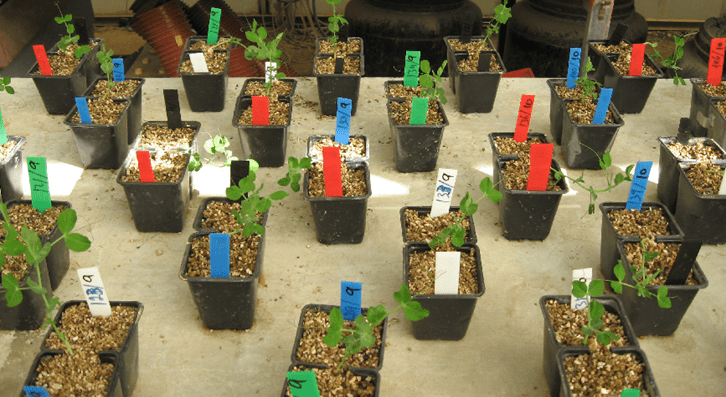Though they lack brains, plants know how to gauge risks and rewards better than most humans. Who you calling a peabrain?

As if making life on this planet possible through photosynthesis wasn’t enough, scientists always find out things about plants that astonish us. Despite the lack of a nervous system, plants like the touch-me-not Mimosa pudica have memory, and can communicate with one another.
Now, scientists report in Current Biology how plants handle risks. They grew pea plants and split their roots between two pots. These pots contained on average the same amount of nutrients, but while one was left untouched, the other’s nutrient amount varied over time. Sometimes it was a lot, sometimes it was a little.
Later, the researchers from Oxford University changed conditions so that average nutrients in both pots would be equally high or low.
It was found that time and time again the pea plant chose the more abundant pot when times were tough, but when there were more than enough nutrients the plants chose the constant pot over the more nutrient-rich pot. Effectively, these pea plants played the risk sensitivity theory perfectly. This theory says that the best possible outcome is to maximize your odds by taking risks when you stand to lose little anyway and go with the safest best when you stand to lose a lot.

“It raises a question, not about plants, but about animals and humans, because if plants can solve this problem simply,” then maybe humans can, too,” Hagai Shemesh, a plant ecologist at Tel-Hai College in Israel who worked on the study told the New York Times. “We have a very fancy brain, but maybe most of the time we’re not using it.”
“In bad conditions, the only chance of success is to take a chance and hope it works out, and that’s what the plants are doing,” said Nick Chater, a behavioral psychologist at the University of Warwick in Britain, who was not involved in the study.
In this respect, plants seem to have the edge on humans who, although have big brains, get clouded by emotions. A plant doesn’t get hyped at the prospect of bathing in nutrients because 1) it doesn’t have thoughts 2) it just flows with the best possibilities for its survival — and that’s simply amazing!


